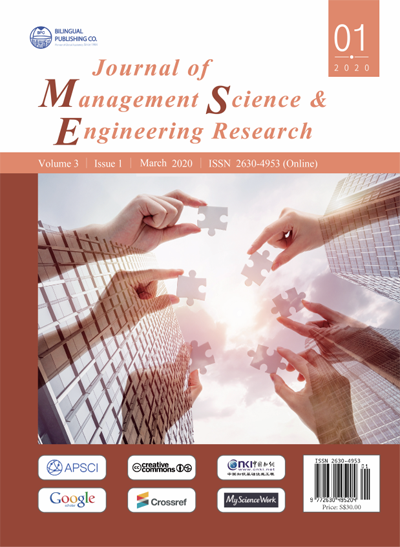-
6165
-
773
-
426
-
424
-
325
Research on the Change of GDP Growth, Monetary Growth and Price Index based on VAR and IRF
DOI:
https://doi.org/10.30564/jmser.v3i1.2396Abstract
In this paper, we use the macro data from the first quarter of 2001 to the first quarter of 2015, through vector autoregressive (VAR) model, Granger causality analysis, impulse response function (RFI) and variance decomposition analysis of quantitative analysis methods, to research on the relationship among China’s real growth variation of gross domestic product(GDP), Money supply growth rate and consumer price index. We find that the money supply growth has impact on China’s real growth variation of GDP in short-term, but there is no long-term significant effect. Economic growth is the main factor to promote the consumer price index growth, money growth is not the main factor driving the change in the price index. China’s currency growth is affected significantly by the change of the economic growth.
Keywords:
GDP growth variation; Broad money growth rate; Consumer price indexReferences
[1] Andreea, R. Emerging Markets Queries in Finance and Business Monetary Policy and Fa tor-Augmented VAR Model. Procedia Economics and Finance, 2015, 32: 400-407.
[2] Annette,M.,Peter,T. The macroeconomic impact of unconventional monetary policy shocks. Journal of Macroeconomics, In Press, Corrected Proof, 2015.
[3] Bo, T. Real exchange rate and economic growth in China: A co-integrated VAR approach. China Economic Review, 2015, 34: 293-310.
[4] Chandler, Lutz. The impact of conventional and unconventional monetary policy on investor sentiment. Journal of Banking & Finance, 2015, 61: 89-105.
[5] Christopher, G., Bert, W., SuTingTing, David, A, C. An empirical analysis of China’s equilibrium exchange rate: A co-integration approach. Journal of Asian Economics, 2013, 29: 33-44.
[6] John G. Fernald, M, M., Spiegel, Eric T. Swanson. Monetary policy effectiveness in China: Evidence from a FAVAR model. Journal of International Money and Finance, Volume 49, Part A, 2014: 83-103.
[7] Juan, M. N., Javier, R. Risk aversion and monetary policy in a global context”, Journal of Financial Stability, 2015, 20: 14-35.
[8] LixinSun, J.L. Ford, David G. D. Bank loans and the effects of monetary policy in China: VAR/VECM approach. Department of Economics, the University of Birmingham, Edgbaston, Birmingham, B15, 2TT, UK, 2009.
[9] Margarita.R. Short and Long-Term Interest Rates and the Effectiveness of Monetary and Macroprudential Policies. Journal of Macroeconomics, In Press, Accepted Manuscript, 2015.
[10] Martin, K., Alexander, K. Reconciling narrative monetary policy disturbances with structuralVAR model shocks. Economics Letters, 2013, 121(2): 247-251.
[11] QingHe, Pak-Ho, L, Terence Tai-Leung Chong. Factor-augmented VAR analysis of the monetary policy in China. China Economic Review, 2015, 25: 88-104




 Jifeng Sun
Jifeng Sun





